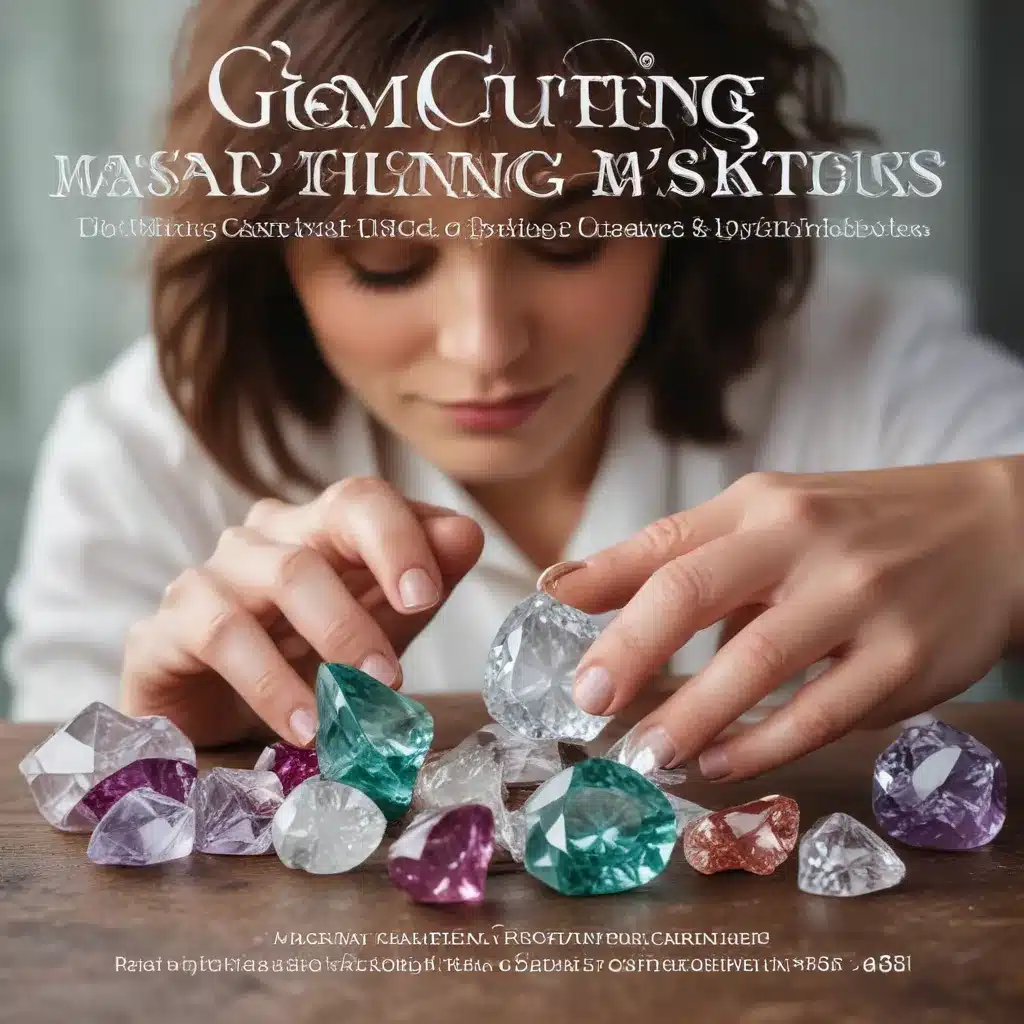
In the captivating world of gemstones, the art of cutting and polishing is the unsung hero that transforms raw crystals into scintillating works of natural beauty. Whether sourced from the Earth’s depths or cultivated in state-of-the-art laboratories, the true magic of gemstones lies in the skillful hands of master gem cutters. At Shelby Gem Factory, we take pride in our unwavering commitment to elevating the brilliance of every gem that passes through our doors.
Gem Cutting Techniques
The intricate process of gem cutting involves a meticulous series of steps, each playing a crucial role in unlocking a stone’s full visual potential. The two primary cutting techniques are faceting and cabochon cutting.
Faceting is the most common and acclaimed method, where a gem’s surface is strategically sculpted into a series of angled facets. The precise placement and proportions of these facets determine a stone’s optical properties, such as its brilliance, fire, and scintillation. Master cutters meticulously calculate the optimal facet angles and indexing to achieve the desired visual effects.
In contrast, cabochon cutting leaves the gem’s surface smooth and domed, with no facets. This technique is often used for opaque or translucent stones, such as opals and turquoise, which showcase their unique patterns and chatoyancy (cat’s-eye effect) more effectively through a smooth, polished dome.
The final step in both techniques is polishing, where the gem’s facets or cabochon surface are meticulously smoothed and buffed to a mirror-like finish. This process enhances the stone’s luster and overall visual appeal.
Cultivated Gem Types
While natural gemstones have long captivated the world, the rise of synthetic or lab-grown gems has revolutionized the industry. These cultivated stones offer unparalleled consistency, quality, and affordability, making them an increasingly popular choice for jewelry and collectors alike.
Synthetic Diamonds
Synthetic diamonds, also known as lab-grown diamonds, are created in highly controlled laboratory environments, replicating the natural diamond formation process. These stones are physically, chemically, and optically identical to their mined counterparts, with the added advantage of being free from the ethical and environmental concerns associated with traditional diamond mining.
Lab-Grown Emeralds
Similarly, lab-grown emeralds are produced by carefully controlling the temperature, pressure, and chemical composition to grow flawless crystals. These cultivated gems are indistinguishable from their natural counterparts, offering a more sustainable and economical alternative.
Moissanite Gemstones
Another fascinating cultivated gem is moissanite, a silicon carbide material that closely resembles the brilliance and fire of diamond. Moissanite’s unique optical properties, including a high refractive index and dispersion, give it a distinct advantage over other diamond simulants, such as cubic zirconia.
Optical Properties of Gems
The captivating allure of gemstones is largely attributed to their intricate optical properties, which are the result of their atomic structure and the way they interact with light.
Refractive index is a measure of how much a gem bends or refracts light as it passes through the material. Stones with a higher refractive index, such as diamond and moissanite, exhibit greater brilliance and fire.
Dispersion, on the other hand, refers to the separation of white light into its component colors as it passes through a gem. Gems with higher dispersion, like diamond and moissanite, display a more pronounced rainbow-like effect, known as fire.
The combination of a gem’s refractive index, dispersion, and the way light interacts with its facets and polish determines its overall brilliance and scintillation (the sparkle and flashes of light).
Gem Cutting Considerations
When it comes to gem cutting, master craftsmen must carefully balance a multitude of factors to unlock a stone’s full visual potential. The first step is rough gem preparation, where the raw crystal is assessed for inclusions, color zoning, and optimal carat weight to determine the best cutting approach.
Cut quality and symmetry are paramount, as even the slightest deviation in facet angles or proportions can significantly impact a gem’s optical performance. Skilled cutters meticulously calculate and execute the ideal facet placement to maximize brilliance and fire.
In the case of lab-grown or synthetic gems, the cutting process is further refined to capitalize on the consistency and purity of the cultivated material, ensuring a level of perfection that is often unattainable in natural stones.
Cutting Equipment and Tools
The art of gem cutting is supported by a suite of specialized equipment and tools. Lap wheels and dops (holders) are used to carefully grind and polish the gem’s facets, while goniometers and protractors ensure precise angle measurements.
Advanced cutting facilities, like the one at Shelby Gem Factory, also employ ultrasonic cleaning systems to meticulously remove any dust or debris from the gem’s surface, leaving it with a flawless, mirror-like finish.
Gem Cutting Styles and Designs
While the classic round brilliant cut remains a perennial favorite, the world of gem cutting has evolved to encompass a vast array of innovative styles and designs. Fancy shaped cuts, such as the cushion, oval, and radiant, offer unique visual appeal and personality to the wearer.
Furthermore, the rise of custom cutting has empowered gem enthusiasts and jewelry designers to collaborate with master cutters, creating truly one-of-a-kind pieces that capture their individual style and vision.
Challenges in Gem Cutting
Despite the skill and precision of modern gem cutting, there are still various challenges that cutters must navigate. Inclusions and defects within the rough gem can limit the options for optimal cutting, requiring creative solutions to minimize their visual impact.
Color zoning, a common occurrence in natural and lab-grown gems, can also pose a challenge, as cutters must carefully orient the stone to showcase the most desirable hues. In some cases, recutting or repolishing may be necessary to revitalize a gem’s appearance.
At Shelby Gem Factory, our team of expert cutters is well-versed in these challenges and employs the latest techniques and technologies to deliver unparalleled results, ensuring that every cultivated gem that leaves our workshop is a true masterpiece of natural beauty and human artistry.

